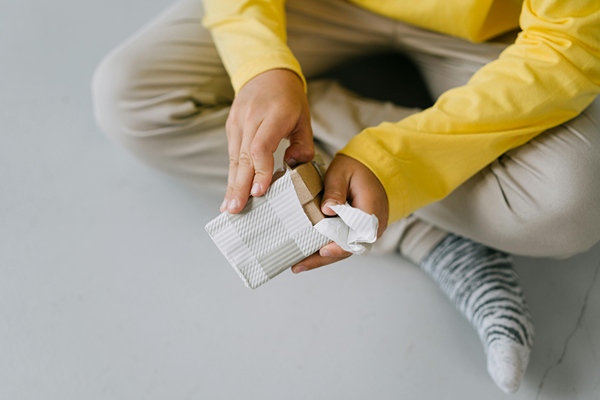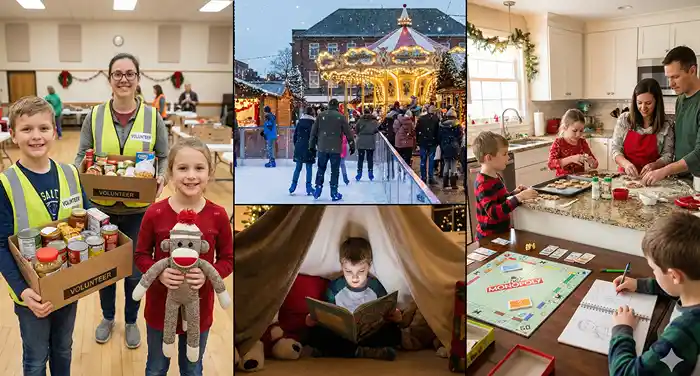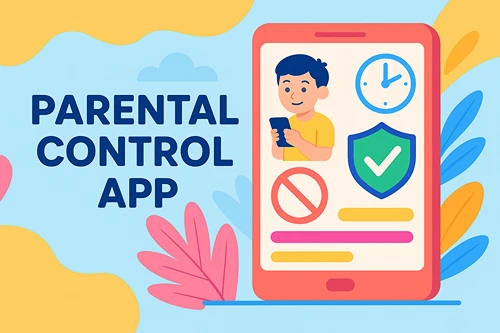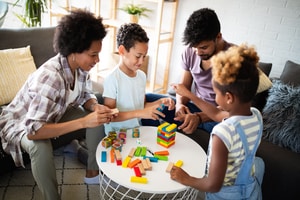4 Parenting Strategies for Holiday Season Sharing
Teaching children about the value of sharing is a tricky process at the best of times and can be even more of an uphill struggle during the holidays. That’s because the festive season throws up potential points of friction when youngsters receive gifts which they’re then expected to share with their siblings.
If this is a concern that’s playing on your mind as the end of the year approaches, here are some strategies which will fold in important lessons about sharing alongside the gift-giving.
Building Traditions with Sharing at the Center
Creating family traditions centered on sharing can transform the holiday season into a lesson in kindness. Start small, and your kids will carry these habits forward.
For instance, you might:
- Prepare a meal together safely then enjoy it as a group to show children how communal efforts bring happiness and camaraderie along with them.
- Let each child open one gift at a time while others cheer them on. This practice emphasizes patience and celebration of each other’s enjoyment.
- Set up a project where everyone contributes ideas or talents, like crafting ornaments for the tree.
- Buy chocolate advent calendars for each child, as these are a popular tradition in Canada, the US, and many other places worldwide. Then, encourage your little ones to swap the treats they get in the lead-up to the big day so that they link this with exchange and equality, rather than self-centered consumption.
This promotes generosity and also forges memories you’ll cherish. Encourage input from your kids so they feel involved in shaping these traditions themselves. That way they’ll see sharing not as an obligation but as something naturally rewarding during festive occasions.
Embodying Generosity in Family Gatherings
Your actions set the stage for how children perceive sharing. So, when you demonstrate generosity openly at family gatherings, you’ll inspire your kids to do the same.
For example, you can:
- Share stories and laughs over meals. When you talk about past family events, include examples of acts of kindness.
- Exchange small tokens or treats with everyone present, reinforcing the joy in giving rather than just receiving.
- Offer to help clean up or assist someone with a task during gatherings. Let your kids see you willingly lending a hand without expecting anything back.
On top of this, discuss why these actions matter, and connect them to real-world values like empathy and supportiveness.
Ultimately, showing that shared experiences build stronger bonds will encourage them to embody those same values throughout their lives. This is especially important when adults now regularly spend over $900 on gifts for the holidays, and so it’s important for all of us to think more about the real meaning behind the celebrations we share with family and friends beyond the cost.

Image Source: Pexels
Charitable Giving as a Family Activity
Engaging in charitable activities offers a powerful way to teach kids about sharing. The holiday season presents an ideal opportunity for this.
To get started:
- Organize a day where the family visits a local food bank or shelter. This provides hands-on experience and highlights community impact.
- Set up a toy or clothing donation drive, letting your children select items they want to give away. They’ll learn firsthand the value of helping others.
- Collaborate on creating care packages for those in need, such as assembling winter kits with essentials like socks and gloves.
Encourage conversations around why these actions matter and link them back to empathy and collective responsibility. Collectively we gave over $557 billion last year, and youngsters will benefit from appreciating their involvement in this wider movement.
In short, incorporating charitable giving into your holiday routine means kids will appreciate that sharing is not just about gifts but also extends beyond their immediate circles.
Balancing Personal Space and Shared Spaces
Teaching children to respect both shared spaces and personal boundaries is crucial, especially when the family comes together for holidays.
In order to guide them:
- Create zones in your home that are communal while also identifying areas where each person can have their own time. This allows kids to understand the importance of privacy alongside collaboration.
- Encourage a system for taking turns with shared toys or gadgets. It helps prevent conflicts over resources everyone wants to use at once.
- Introduce family activities that require working together, such as building a puzzle. Emphasize cooperation while allowing individuals room for self-expression.
Conversations about respecting others’ belongings and spaces should be open-ended yet direct. This approach ensures they see sharing as an opportunity rather than an imposition.
Final Thoughts
As you can see, there’s a whole heap of ways for parents to make sure that sharing isn’t sidelined when the holiday season arrives. Factoring it into everything from gift giving and family gatherings to the way that domestic space is designated and structured is part of molding your kids into members of the community who are more about giving than taking.





